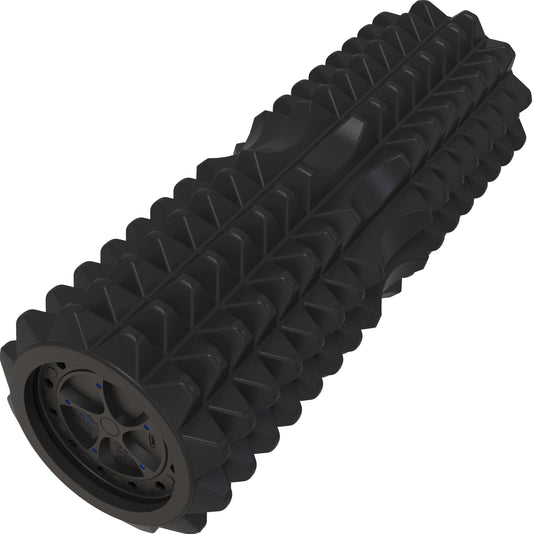Last Updated: February 8, 2025
Warming up before exercising is a crucial step that many people overlook. It helps to prepare the body for physical activity by increasing heart rate, improving blood flow, and enhancing oxygen delivery to muscles. Skipping this important step can lead to injuries and decrease overall performance during workouts.
Understanding how warming up benefits the body can motivate individuals to incorporate it into their routines. Engaging in specific warm-up activities, such as dynamic stretches or light cardio, can significantly enhance the effectiveness of the main workout. This preparation not only boosts performance but also helps to ensure a safer exercise experience.
Taking just a few minutes to warm up can change the outcome of a workout. By building a habit of warming up, a person can experience better results and enjoy exercise even more.
Key Takeaways
- Warming up raises heart rate and improves blood flow.
- Specific activities can enhance workout performance.
- Proper warm-ups reduce the risk of injuries.
The Science of Warming Up
Warming up is important for preparing the body for exercise. It positively affects muscle temperature, oxygen delivery, and mental focus. Understanding these elements can help individuals maximize their physical activity and reduce injury risks.
Increasing Muscle Temperature
Warming up raises muscle temperature, which is essential for optimal performance. Muscle temperature affects elasticity and flexibility. Higher temperatures allow muscles to stretch more easily, reducing the chance of strains and tears.
When muscles are warm, their ability to contract efficiently improves. This leads to better strength and power during exercise. A few warm-up exercises, like light jogging or dynamic stretches, can help increase muscle temperature quickly.
This process also enhances the range of motion in joints. Increased flexibility helps athletes perform movements with greater ease, thus boosting overall effectiveness in their workouts.
Improving Oxygen Delivery
Effective warm-up exercises enhance blood flow to the muscles. As body temperature rises, the cardiovascular system becomes more efficient in delivering oxygen to the working muscles.
Oxygen is vital for energy production in muscle cells. The more oxygen they receive, the longer they can sustain physical activity without fatigue.
Warm-ups also help in dilating blood vessels, improving circulation. This opens up pathways for better transport of nutrients and waste products, which supports muscle recovery.
Incorporating a variety of warm-up activities can optimize this process, ensuring the body is well-prepared for more intense exertion.
Enhancing Mental Focus
Warming up is not just about physical readiness; it also prepares the mind. Mental focus is crucial for performance in any physical activity.
A proper warm-up routine helps individuals transition into an athletic mindset. Activities that increase heart rate can stimulate the brain and improve concentration. This mental preparation can lead to better decision-making and coordination during workouts or competitions.
Setting aside time for focused breathing or visualization during warm-ups can enhance this effect. These techniques help create a positive headspace and boost confidence, enabling individuals to perform at their best when it matters most.
Types of Warm-Up Activities
Warming up can take various forms. Each type focuses on specific aspects that prepare the body for exercise. Incorporating both dynamic stretching and cardiovascular exercises enhances flexibility and endurance significantly.
Dynamic Stretching to Boost Flexibility
Dynamic stretching incorporates movement to improve flexibility before workouts. These stretches involve controlled leg and arm movements that help loosen muscles and joints. They aid in joint lubrication, which is vital for smooth range of motion.
Examples of dynamic stretches include leg swings, arm circles, and hip circles. These stretches not only prepare the muscles but also elevate heart rate gradually. Increased heart rate ensures the body is ready for more intense activity.
A proper dynamic stretching routine typically lasts 5-10 minutes. This is enough time to enhance flexibility without tiring the muscles. Dynamic stretches make workouts safer and more effective by reducing injury risk.
Cardiovascular Exercises for Better Endurance
Cardiovascular exercises are essential warm-up activities that elevate heart rate and prepare the body for more vigorous exercises. Activities like jogging, cycling, or jumping jacks effectively increase blood flow to muscles.
Typically, a 5-10 minute session of moderate cardiovascular activity is beneficial. This helps improve endurance, allowing the body to sustain longer workouts. As the heart rate rises, it also increases oxygen delivery to the muscles, enhancing performance.
Incorporating these exercises into a warm-up routine prepares the cardiovascular system for intense activity. It can also mentally prepare individuals for the workout ahead, leading to better focus and effort.
Benefits of a Proper Warm-Up
A proper warm-up brings numerous benefits, including reducing injury risks and enhancing overall performance. It prepares the body for the demands of exercise, helping with endurance and ensuring a smoother transition into the workout.
Reducing the Risk of Injury
Warming up activates the muscles and increases blood flow, which makes them more flexible. Cold muscles are more prone to strains and injuries. By engaging in activities that gently stretch and warm up muscle groups, one can significantly reduce the risk of muscle strains and other injuries.
Stretching and light aerobic activities also prepare the joints by improving their range of motion. This flexibility is crucial, especially for activities that involve quick movements or heavy lifting. When muscles are warmed up, they respond better to stress, thereby enhancing injury prevention.
Enhancing Performance and Endurance
A warm-up routine can enhance performance by preparing the cardiovascular system. As heart rate increases, blood pumps faster, delivering oxygen more efficiently. This improved oxygen delivery supports better endurance during workouts or sports activities.
Moreover, a proper warm-up helps clear lactic acid build-up, delaying fatigue. This allows for improved strength output and stamina throughout the exercise session. Sequences that boost breathing and ensure full muscle activation lead to optimal performance during physical activities.
Facilitating a Smoother Transition into the Workout
Transitioning from rest to exercise can be jarring for the body. A structured warm-up guides this process seamlessly. It prepares the body, allowing for gradual increases in intensity and promoting optimal workout preparation.
Using a variety of movements activates the major muscle groups involved in the upcoming workout. This not only enhances focus but also aligns the mind with physical readiness. Implementing a pre-workout warm-up keeps participants mentally engaged and prepared for the challenges ahead.
Frequently Asked Questions
Warming up before exercise plays a vital role in preparing the body and mind for physical activity. The following questions address the significance, benefits, risks, and effects of a proper warm-up routine.
What is the significance of performing a warm-up routine prior to exercise?
A warm-up routine gradually increases heart rate and blood flow to the muscles, which can enhance oxygen delivery. This process helps to prepare the body for more intense physical activities, making the workout more effective.
How can warming up before exercise enhance performance?
Warming up helps improve flexibility and range of motion in the joints, enabling better movement during exercise. It can also enhance coordination and reaction time, leading to improved performance overall.
What are the potential risks of skipping a warm-up before exercising?
Skipping a warm-up can lead to muscle stiffness, which increases the chance of strains or injuries. Without proper preparation, the body may not perform efficiently, making workouts less effective.
In what ways does a warm-up impact injury prevention?
A proper warm-up increases muscle temperature and elasticity, reducing the risk of tears or strains. It also helps the body gradually adapt to the increased demands of exercise, which can lower the risk of injuries.
Can the effectiveness of a workout be affected by the quality of the warm-up?
How do warm-up exercises prepare both mind and body for strenuous activity?
Warm-up exercises help athletes mentally focus on their upcoming activity. This mental preparation, combined with the physical benefits, allows for a better connection between the mind and body, leading to improved performance.












